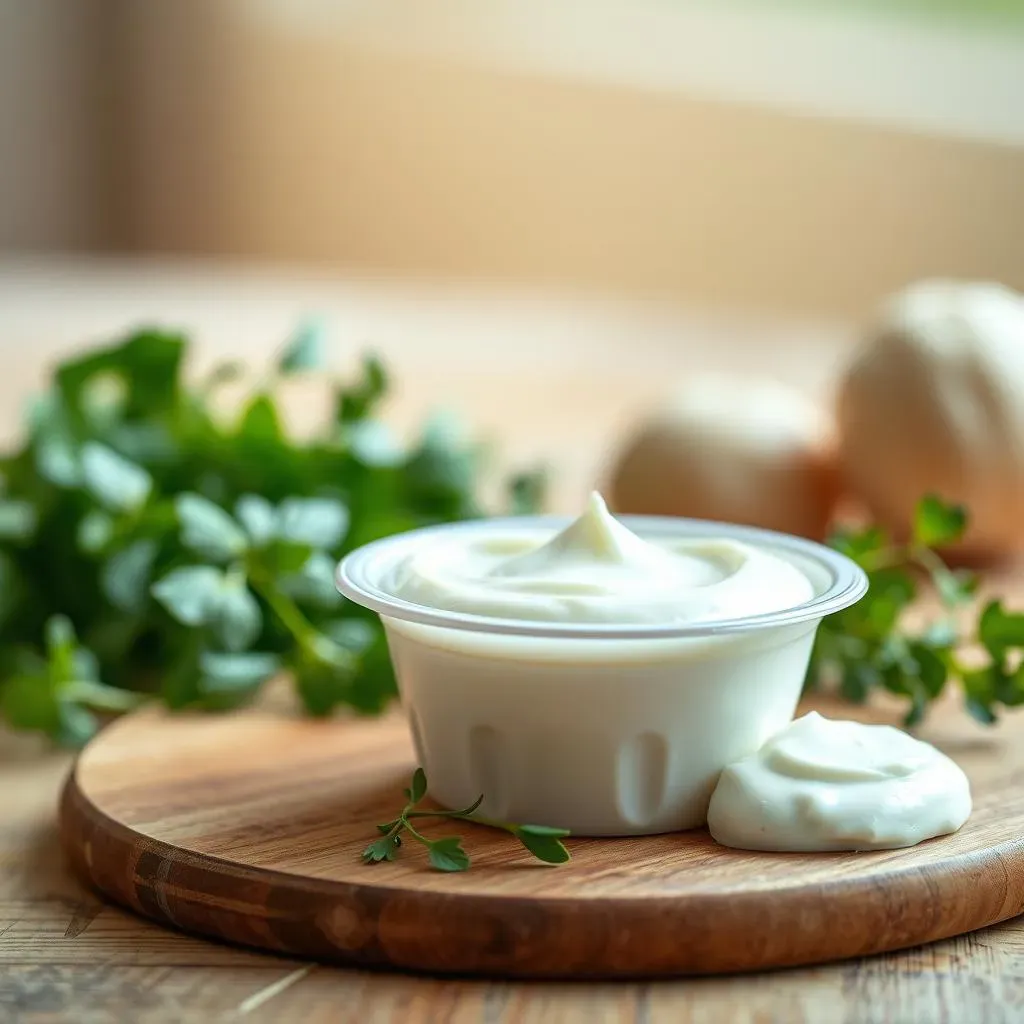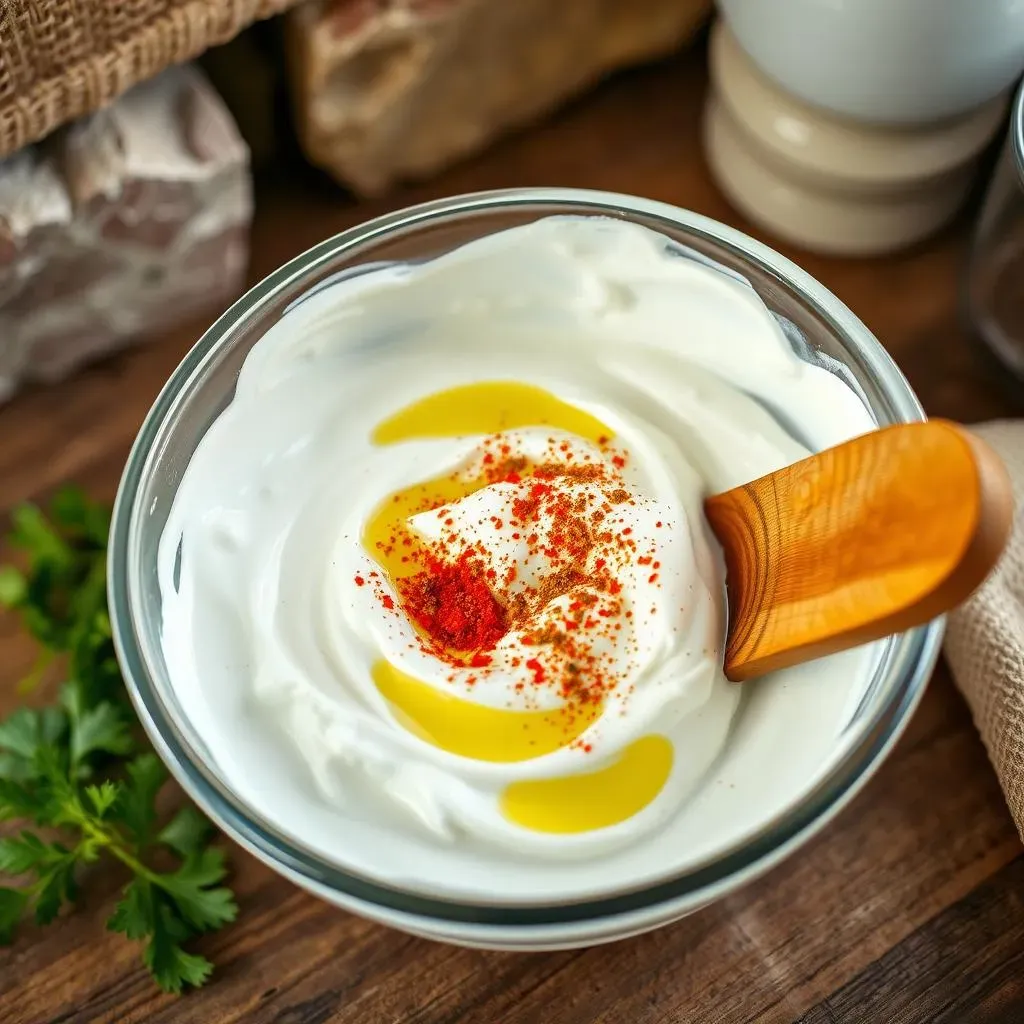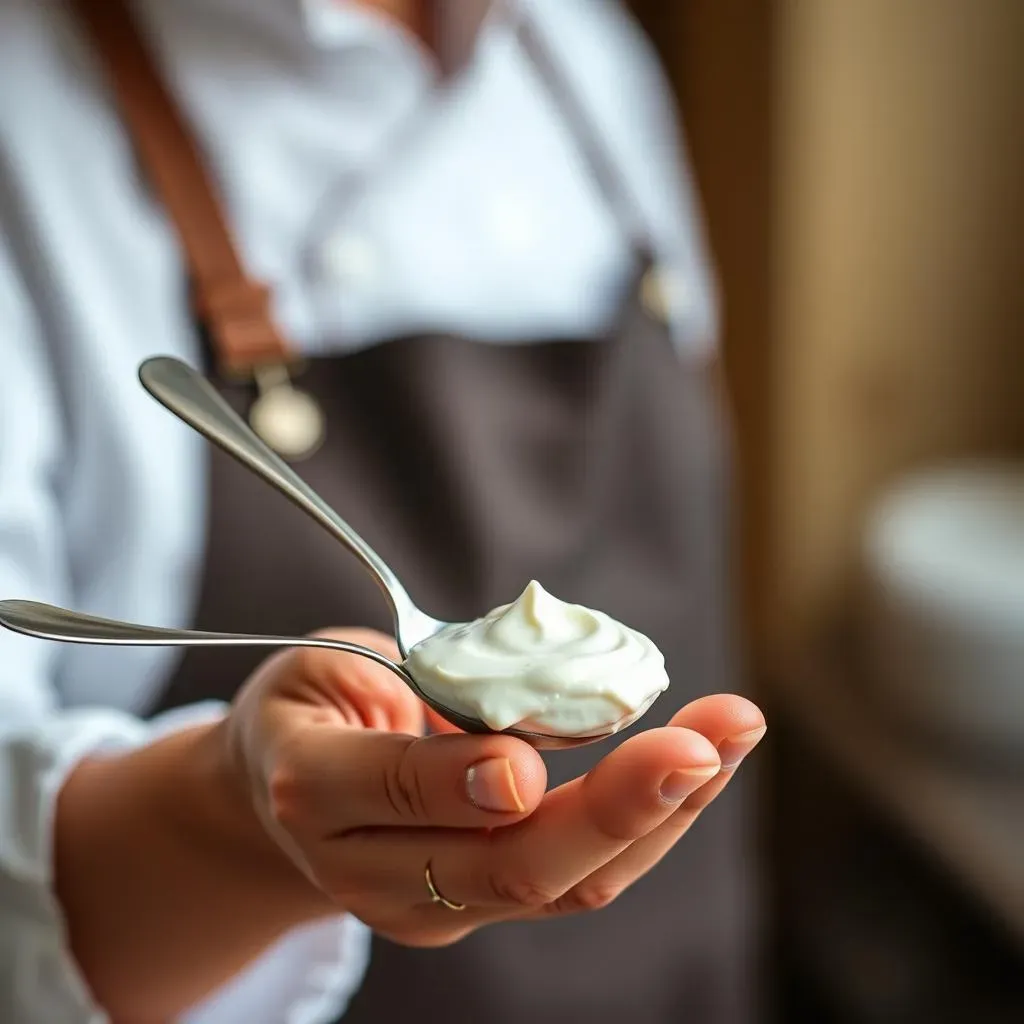Table of Contents
Ever found yourself staring into the fridge, recipe in hand, only to realize you're out of sour cream? Don't panic! There's a tangy, creamy hero waiting in the wings: Greek yogurt. But, is Greek yogurt a substitute for sour cream that actually works? That's what we're here to explore. This article isn't just about swapping one ingredient for another; it's about understanding the nuances of flavor, texture, and how these two dairy delights behave in different cooking scenarios. We'll be tackling the big questions: Can you really use Greek yogurt in your favorite dips and sauces? What about baking? And, most importantly, will it taste good? Get ready to uncover the secrets of this kitchen substitution and learn when Greek yogurt is your best friend, and when you might need to reach for something else. We'll guide you through the taste and texture differences, explore its use in cooking and baking, and give you some helpful tips to make the swap a success. Let's get started!
Greek Yogurt: A Healthy Swap for Sour Cream?

Greek Yogurt: A Healthy Swap for Sour Cream?
Okay, so you're wondering if Greek yogurt can actually step into sour cream's shoes, right? Well, let's talk about why this swap is not just convenient, but often a smarter choice. Sour cream, while delicious, can be a bit of a calorie and fat bomb. Greek yogurt, on the other hand, particularly the non-fat or low-fat varieties, is like its leaner, meaner cousin. We're talking fewer calories, less fat, and a whole lot more protein. That's a win-win in my book, especially if you're trying to keep things healthy without sacrificing that creamy, tangy goodness. It's not just about cutting calories, it's about getting more bang for your buck – more protein to keep you full and energized, and less of the stuff that might make you feel sluggish. It's like trading in a gas-guzzling car for a sleek, fuel-efficient one; you still get where you need to go, but you feel better about it.
Taste and Texture: How Greek Yogurt Stacks Up as a Sour Cream Substitute

Taste and Texture: How Greek Yogurt Stacks Up as a Sour Cream Substitute
The Tang Factor
Alright, let's get real about taste. Both sour cream and Greek yogurt have that lovely tang, but it's not quite a one-to-one match. Sour cream's tang is often described as sharper and more pronounced, that classic, almost "bitey" flavor that makes your taste buds sing. Greek yogurt, on the other hand, has a milder, smoother tang. It’s like the difference between a lemon and a lime; both are citrusy, but each has its own unique character. I find that the Greek yogurt is a bit more mellow, less likely to overpower other flavors in a dish. This can be a good or bad thing, depending on what you're going for. If you're looking for that intense sour cream punch, you might need to add a little lemon juice or vinegar to your Greek yogurt to get it closer to the mark. It’s all about playing around and finding what works best for your palate.
Think about it this way: Sour cream is like that friend who always tells it like it is, a bit blunt but honest. Greek yogurt is more like the friend who gives gentle, thoughtful advice. Both are great, but they have different approaches to the situation.
Creaminess and Consistency
Now, let's talk texture, which, in my opinion, is just as important as taste. Sour cream is known for its rich, velvety smoothness, a luxurious texture that coats your tongue. Greek yogurt, especially the full-fat kind, comes close, but it tends to be a bit thicker and denser. It's not quite as "melty" as sour cream, more like a thick, luscious cloud. If you've ever had the pleasure of a truly well-made Greek yogurt, you'll know it can be incredibly satisfying in its own right. The texture difference is most noticeable when you're using them as a topping or in a cold dish. In baking or cooking, the differences tend to blend a bit more, particularly when mixed with other ingredients. However, if you're aiming for that specific, silky sour cream feel, you might need to thin your Greek yogurt out a little bit with a touch of milk or water. Again, it’s all about experimentation to get the result you desire.
I've found that a good way to think about it is that sour cream is like a satin sheet, smooth and flowing, while Greek yogurt is more like a soft, plush blanket, comforting and substantial. Both are great, just in different ways.
Feature | Sour Cream | Greek Yogurt |
|---|---|---|
Tang | Sharp, Pronounced | Milder, Smoother |
Texture | Rich, Velvety, Melts | Thick, Dense, Substantial |
Fat Content | Higher | Lower (especially low-fat options) |
Protein Content | Lower | Higher |
Baking and Cooking: When is Greek Yogurt a Good Sour Cream Substitute?

Baking and Cooking: When is Greek Yogurt a Good Sour Cream Substitute?
Okay, so we've talked about taste and texture, now let's get to the real nitty-gritty: when can you actually use Greek yogurt in place of sour cream in your cooking and baking adventures? The good news is, quite often! In many recipes, especially those where sour cream is a supporting character rather than the star, Greek yogurt is a fantastic stand-in. Think about things like dips, sauces, and salad dressings. Greek yogurt shines here, adding that creamy tang without the extra fat and calories. It blends beautifully into creamy dips, making them a bit lighter but still satisfying. In sauces, it provides a lovely richness and body, and in dressings, it gives that nice, tangy kick we're looking for. I’ve personally swapped sour cream for Greek yogurt in countless dips and have never looked back. It's a simple swap that makes a big difference to your overall health without sacrificing flavor.
However, there are some places where you might want to be a little more cautious. Baking, for instance, can be a bit more finicky. Sour cream's higher fat content contributes to moisture and tenderness in baked goods. Greek yogurt can be a good substitute, but you might need to make some adjustments to ensure your cakes and muffins don't end up dry or dense. We'll get into some specific tips in a bit, but the key thing to remember is that while Greek yogurt is versatile, it’s not a perfect one-to-one swap in every single recipe. It’s all about understanding the role sour cream plays and how Greek yogurt can step up to the plate.
Use Case | Greek Yogurt as a Substitute | Notes |
|---|---|---|
Dips | Excellent | Adds creaminess and tang; may need slight seasoning adjustment |
Sauces | Very Good | Provides richness and body; works well in both hot and cold sauces |
Salad Dressings | Great | Adds a tangy kick and creamy texture; can be thinned if needed |
Baking | Good (with adjustments) | May need added moisture or fat; consider using full-fat Greek yogurt |
Making the Switch: Tips for Using Greek Yogurt Instead of Sour Cream

Making the Switch: Tips for Using Greek Yogurt Instead of Sour Cream
Choosing the Right Yogurt
Okay, so you're ready to ditch the sour cream and embrace the Greek yogurt life? Awesome! But before you go tossing any old yogurt into your recipes, let's talk strategy. First things first, the type of Greek yogurt you choose makes a big difference. I'd say, for most substitutions, go for plain, full-fat Greek yogurt. It’s closest in texture and richness to sour cream, which means you'll get the best results. Low-fat or non-fat Greek yogurts are okay in a pinch, but they tend to be a bit thinner and tangier, so you might need to adjust your recipes a bit. Also, always make sure it's plain. Flavored yogurts will throw off the taste of your dish. Trust me, you don't want a hint of strawberry in your chili. Unless, of course, that's your thing, no judgement here.
Think of it like this: you wouldn't use a sports car for off-roading, right? Similarly, you wouldn’t pick a low-fat yogurt for something that needs that full-bodied creaminess. Choosing the right yogurt is the first step to a successful swap. It's like picking the right tool for the job, and in the kitchen, that can make all the difference.
Adjusting for Texture and Taste
Alright, let’s talk tweaks. Even with the right yogurt, you might need to make some minor adjustments to get that perfect sour cream feel and flavor. If your Greek yogurt is a bit too thick, don't be afraid to thin it out with a tablespoon or two of milk or even water. This will make it more "melty," similar to sour cream. On the flip side, if you find the flavor isn’t quite as tangy as you’d like, a squeeze of lemon juice or a dash of white vinegar can do the trick. Start with a small amount and add more to taste. Remember, you can always add more, but you can't take it out! It's all about tasting as you go and fine-tuning to your liking. I like to think of it as being a kitchen chemist, experimenting with different elements to achieve the perfect reaction. It's all about having fun and playing around.
Another thing, when using Greek yogurt in warm dishes, add it at the end. Adding it too early can cause it to curdle and separate. Nobody wants a grainy sauce, so keep it cool and add it at the last minute for the best results.
Issue | Solution |
|---|---|
Yogurt too thick | Thin with milk or water, one tablespoon at a time |
Not tangy enough | Add lemon juice or white vinegar, a small amount at a time |
Curdling in warm dishes | Add at the end of cooking or use a cornstarch slurry |